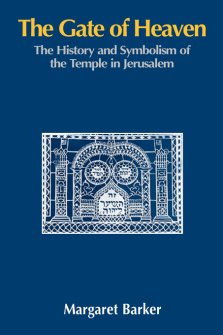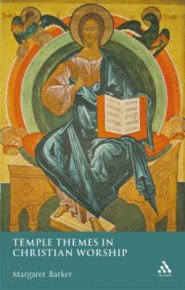First published in 2007
I recently reviewed a companion work to this book also by Margaret Barker. This was The Great High Priest, subtitled, The Temple Roots of Christian Worship. This could easily have been the subtitle to this volume as well.
Once again, Barker’s purpose is to show how so much of Christian worship has its roots in the Jewish Temple. She believes this is because the first Christians consciously saw themselves as continuing in their own liturgical life the worship offered in the temple in Jerusalem. She begins by elucidating this idea, building a picture of the world view of the early Church, and then in the light of that looking at the sacraments of the Eucharist and baptism, the festivals and the music, together with a consideration of such matters as the construction of church buildings.
Those who follow where Barker leads must, however, be prepared to enter a very different world from the one we might previously have thought the world of the first Christians to be. In the Preface, she makes the point that ‘the temple was a world of its own, with its own language, its own symbols and stories. The literalism that we consider accuracy was alien to this way of thinking and being, where talking snakes and seven horned lambs were the sophisticated symbolic theology of a non-philosophical culture’. Once you have grasped this, you can begin the exciting adventure of trying to understand why the worship of the Church took the form it did and what the meaning of some of these practices might be.
The book will mainly be of interest to scholars but the more general reader can benefit from a detailed and intriguing account of both temple and early church worship. It does not exhaust all that Margaret Barker has discovered: she does not touch upon art or architecture; and she says she has not written about the role of the Blessed Virgin Mary. So there is more to come!
Trustpilot







